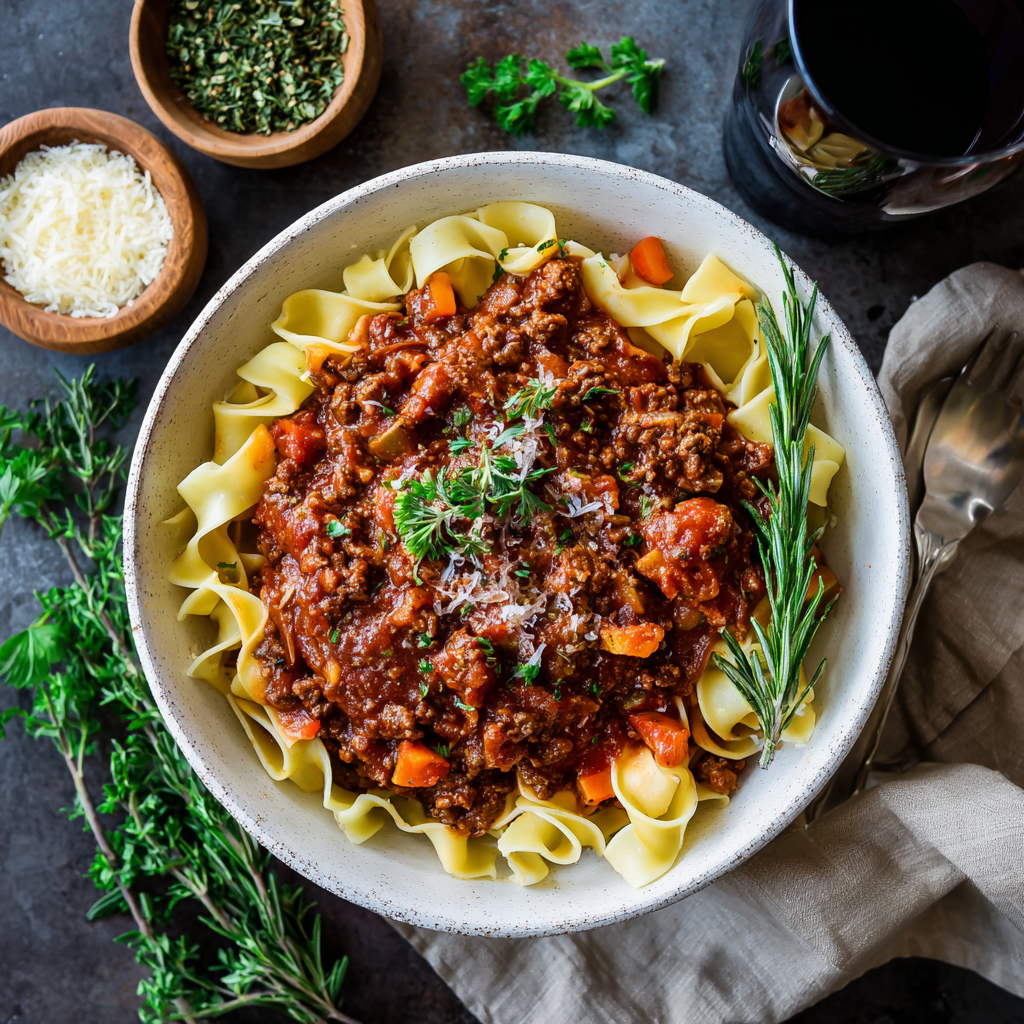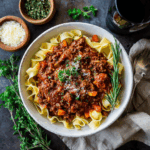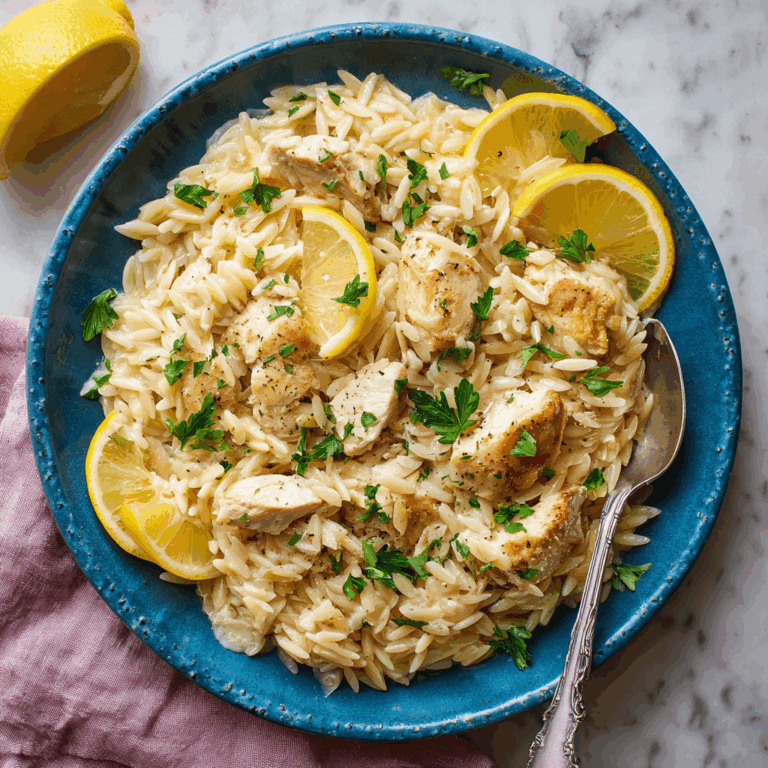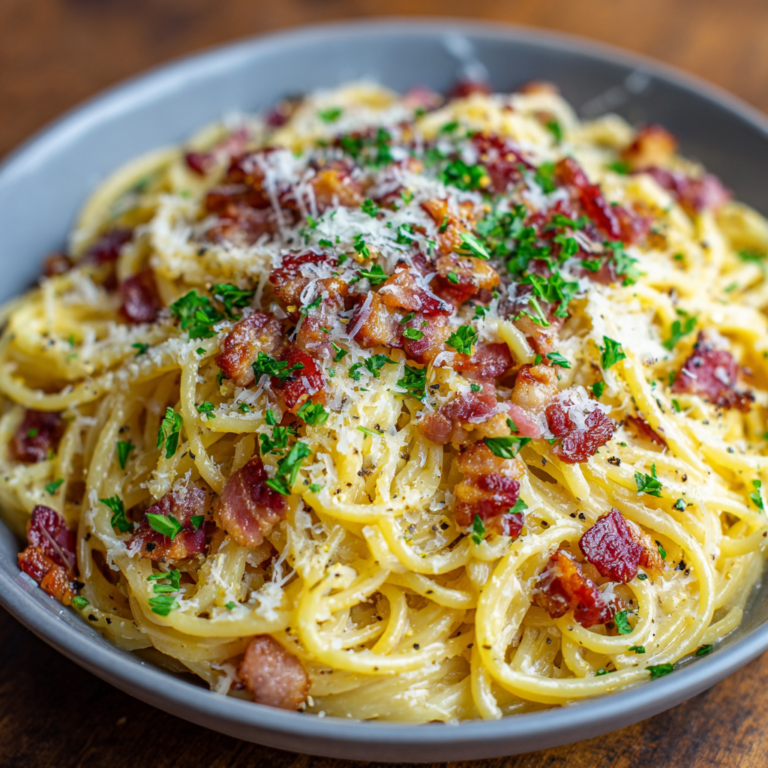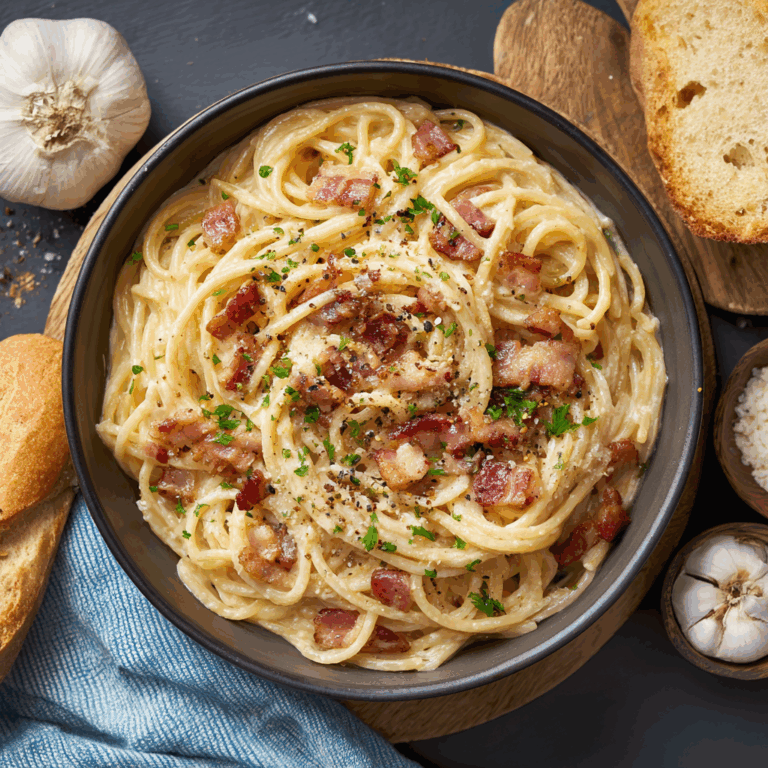The Ultimate Comfort: Crafting The Best Braised Beef and Pork Ragu
There are dishes, and then there are experiences. Dishes you can throw together on a Tuesday night to feed a hungry family, and experiences that fill your home with an intoxicating, savory perfume for hours, promising a meal that will be remembered long after the last bite is gone. In the pantheon of these culinary experiences, few things are as universally adored, as deeply satisfying, or as soul-warmingly perfect as The Best Braised Beef and Pork Ragu.
This isn’t just another pasta sauce. This is a project of love, a slow dance of ingredients transformed by time and gentle heat. It’s a rich, hearty, and profoundly flavorful sauce where tough cuts of meat become impossibly tender, and a simple tomato base evolves into a complex, velvety masterpiece. It’s the kind of food that turns a simple weeknight into an event and makes a weekend gathering unforgettable.
So, what separates a good ragu from The Best Braised Beef and Pork Ragu? It’s not a single ingredient or a secret trick. It’s a philosophy. It’s about building layers of flavor, from the initial sear of the meat to the gentle simmer that follows, and understanding that patience is the most crucial ingredient of all. In this guide, we will walk through every step, every choice, to ensure your ragu isn’t just good, but legendary.
Why This Truly Is The Best Braised Beef and Pork Ragu
Before we dive into the recipe, let’s establish why this particular method and combination yield such extraordinary results.
-
The Power of Two Meats: Using both beef and pork is non-negotiable for depth. Beef brings a robust, hearty, and quintessentially “meaty” flavor. Pork, especially from a well-marbled cut like pork shoulder (or butt), introduces a layer of unctuous fat and a subtle sweetness that balances the beef perfectly. This synergy creates a far more complex flavor profile than a single meat ever could.
-
Braising, Not Browning: Many recipes call for ground meat, and while they can be delicious, they lack the textural depth of a true, slow-cooked ragu. The Best Braised Beef and Pork Ragu starts with whole, tough cuts of meat that are seared and then gently broken down over hours of low-heat cooking. This process, called braising, renders the connective tissue into rich, silky gelatin, making the meat fall-apart tender and enriching the entire sauce with body and mouthfeel.
-
The Holy Trinity of Aromatics (Soffritto): Onion, carrot, and celery are the undisputed foundation of Italian cooking. When finely chopped and slowly sautéed until sweet and soft, they form a flavor base (a soffritto) that supports every other ingredient in the pot. Rushing this step is the first mistake many make; a proper soffritto is the soul of the sauce.
-
The Slow Simmer: Flavor cannot be rushed. A one-hour simmer will give you a tasty sauce. A three to four-hour simmer will give you a transformative experience. This extended time allows the water to evaporate, concentrating the flavors, while the fats and proteins from the meat slowly meld with the tomatoes and wine, creating a harmonious and deeply integrated sauce.
Deconstructing the Ingredients for The Best Braised Beef and Pork Ragu
Every component in this recipe has a purpose. Understanding the “why” will empower you to make this dish your own.
The Meat: The Heart of the Matter
-
Beef: We recommend a 2-pound chuck roast. Chuck is cut from the shoulder, a well-exercised muscle that is full of connective tissue and marbling. This is exactly what you want for braising, as it transforms into succulent, shreddable perfection.
-
Pork: A 1.5-pound boneless pork shoulder (Boston butt) is the ideal partner. It shares the same braise-friendly qualities as chuck roast, contributing immense flavor and luxurious fat.
The Aromatics: Building the Foundation
-
Onion, Carrot, and Celery: The classic soffritto. We’ll use one large onion, two large carrots, and two large celery stalks, all finely diced to a uniform size. This ensures they melt into the sauce seamlessly.
-
Garlic: Four cloves, minced. Added after the soffritto is soft to prevent burning and bitterness.
The Liquid: The Braising Medium and Flavor Catalyst
-
Dry Red Wine: About 1 cup. The alcohol cooks off, leaving behind acidity and fruitiness that cuts through the richness of the meat. A Chianti or Sangiovese is a classic choice, but any dry, drinkable red wine will work. Avoid “cooking wine.”
-
Whole San Marzano Tomatoes: A 28-oz can. San Marzanos from Italy are prized for their sweet, low-acidity flavor and fewer seeds. We’ll crush them by hand for a rustic, varied texture.
-
Tomato Paste: 2 tablespoons. This is a flavor bomb. We’ll cook it for a minute or two to caramelize it slightly, which deepens its flavor and removes any raw, tinny taste.
-
Beef Broth: 2 cups, preferably low-sodium. This forms the bulk of the braising liquid, ensuring the meat is mostly submerged.
The Flavor Enhancers: The Secret Weapons
-
Parmesan Rind: This is the ultimate secret ingredient for The Best Braised Beef and Pork Ragu. If you have a rind saved from a piece of Parmigiano-Reggiano, toss it into the pot. As it simmers, it releases umami, saltiness, and a subtle nuttiness that permeates the entire sauce, adding an incredible depth that is otherwise impossible to achieve.
-
Bay Leaves: Two dried bay leaves add a subtle, floral, and woodsy background note.
-
Fresh Herbs: A few sprigs of fresh thyme and rosemary, tied together with kitchen twine for easy removal.
The Step-by-Step Journey to The Best Braised Beef and Pork Ragu
This is a ritual. Put on some music, pour yourself a glass of the wine you’re cooking with, and enjoy the process.
Total Time: 4 – 4.5 hours (mostly hands-off simmering)
Serves: 6-8
Ingredients:
-
2 lbs beef chuck roast, cut into 3-inch chunks
-
1.5 lbs boneless pork shoulder, cut into 3-inch chunks
-
Kosher salt and freshly ground black pepper
-
2 tbsp olive oil
-
1 large yellow onion, finely diced
-
2 large carrots, finely diced
-
2 large celery stalks, finely diced
-
4 cloves garlic, minced
-
2 tbsp tomato paste
-
1 cup dry red wine
-
1 (28 oz) can whole San Marzano tomatoes, hand-crushed
-
2 cups low-sodium beef broth
-
1 Parmesan rind (optional but highly recommended)
-
2 dried bay leaves
-
3-4 sprigs fresh thyme
-
1 sprig fresh rosemary
-
For Serving:
-
1.5 lbs pappardelle or tagliatelle pasta
-
Freshly grated Parmigiano-Reggiano cheese
-
Fresh parsley, chopped
-
Instructions:
Step 1: Prepare and Sear the Meat
Pat the chunks of beef and pork completely dry with paper towels. This is critical for achieving a proper sear, not a steam. Generously season all over with salt and pepper.
Heat the olive oil in a large, heavy-bottomed Dutch oven over medium-high heat until it shimmers. Working in batches to avoid overcrowding (which also causes steaming), sear the meat on all sides until a deep, brown crust forms. This browning, known as the Maillard reaction, is where a massive amount of flavor is built. Do not rush this step; it should take about 5-7 minutes per batch. Transfer the seared meat to a plate and set aside.
Step 2: Build the Soffritto
Reduce the heat to medium. In the same pot, with all the rendered fat and browned bits (the fond), add the diced onion, carrot, and celery. Season with a pinch of salt, which helps draw out moisture. Cook, stirring occasionally, for 8-10 minutes until the vegetables have softened and sweetened, and the onions become translucent. Add the minced garlic and cook for one more minute until fragrant.
Step 3: Deglaze and Develop Flavor
Push the vegetables to the side and add the tomato paste to the center of the pot. Let it cook for 1-2 minutes, stirring, until it darkens slightly and smells sweet. This simple step unlocks a deeper, richer tomato flavor.
Now, pour in the red wine. As it hits the hot pot, use your spoon to scrape up all the browned bits from the bottom. This is called deglazing, and it incorporates all those concentrated, flavorful bits into your sauce. Let the wine simmer and reduce by about half, which will take 3-4 minutes.
Step 4: The Grand Assembly and the Braise
Return the seared meat and any accumulated juices to the pot. Add the hand-crushed San Marzano tomatoes and their juices, along with the beef broth. The liquid should come about three-quarters of the way up the meat. Stir everything to combine.
Now, add your flavor power-ups: the Parmesan rind, the bay leaves, and the bundle of fresh thyme and rosemary. Bring the pot to a very gentle simmer—you should see only occasional bubbles breaking the surface.
Step 5: The Patient Simmer
Once simmering, cover the Dutch oven with a tight-fitting lid and reduce the heat to the lowest possible setting. Alternatively, you can transfer it to a 300°F (150°C) oven. Let it cook, undisturbed, for 3 to 3.5 hours. After this time, check the meat. It should be fork-tender, meaning a fork can be inserted and the meat easily pulls apart.
Step 6: The Final Transformation
Using tongs, carefully remove the large pieces of meat to a separate bowl or cutting board. Discard the herb bundle, bay leaves, and Parmesan rind (though you can nibble on the soft, cheesy part of the rind—it’s a cook’s treat!).
Using two forks, shred the beef and pork completely. It should offer no resistance.
At this stage, you have a choice. For a more rustic, textured ragu, simply return the shredded meat to the pot. For a more cohesive, luxurious sauce, you can use a hand blender to briefly pulse the remaining liquid and vegetables in the pot a few times to thicken it slightly before adding the meat back in. This is our preferred method for achieving the perfect sauciness.
Return the shredded meat to the pot, stir to combine, and let it simmer uncovered for another 15-20 minutes to allow the flavors to meld one final time and for the sauce to thicken to your desired consistency. Taste and adjust seasoning with salt and pepper.
Step 7: Serving Your Masterpiece
While the ragu is in its final simmer, cook your pasta. Pappardelle or tagliatelle are the traditional choices for a reason—their wide, flat surfaces are perfect for clinging to this thick, hearty sauce. Cook the pasta in well-salted water until just al dente. Reserve about a cup of the starchy pasta water before draining.
Add the drained pasta directly into the pot with the ragu. Toss gently but thoroughly, adding a splash of the reserved pasta water if needed to help the sauce coat every strand of pasta beautifully.
Serve immediately in warm bowls, topped with a generous snowfall of freshly grated Parmigiano-Reggiano and a sprinkle of bright, fresh parsley.
PrintThe Ultimate Comfort: Crafting The Best Braised Beef and Pork Ragu
This Beef and Pork Ragu is the ultimate comfort food. Slow-cooked in a Dutch oven, it combines lean ground beef, savory pork, and a fragrant vegetable base with tomato and wine. The long, gentle simmer allows all the flavors to meld into a deep, satisfying sauce. Serve it over your favorite pasta for a bowl of pure comfort.
- Author: alae
Ingredients
Ragu & Pasta:
-
10 oz pasta (tagliatelle, pappardelle, or your favorite)
-
1 lb lean ground beef
-
1 lb ground pork
Vegetables:
-
1½ cups celery, finely chopped
-
1½ cups carrot, finely chopped
-
1½ cups onion, finely chopped
Sauce & Flavorings:
-
2 x 680 g cans passata (tomato puree)
-
1 cup white wine
-
4 tbsp tomato paste
-
1 tbsp dried oregano
-
1 tbsp salt (adjust to taste)
-
1 tbsp black pepper
-
4 sprigs rosemary & 4 sprigs thyme, tied as a bouquet garni
-
2-inch piece of Parmesan rind
-
¼ cup half-and-half (optional, for creaminess)
Garnish:
-
Fresh parsley, chopped
-
Grated Parmesan cheese
Instructions
1. Prep the vegetables
Finely chop celery, carrot, and onion. This mixture is your classic mirepoix.
2. Brown the meat
-
Heat olive oil in a large Dutch oven over medium-high heat.
-
Add ground beef and pork, breaking it apart with a spoon.
-
Cook until well browned with crispy bits (8–10 minutes). This browning adds deep flavor.
3. Sauté aromatics
-
Add the chopped celery, carrot, and onion to the meat.
-
Cook 5–7 minutes, stirring occasionally, until softened.
4. Build the sauce
-
Pour in white wine to deglaze the pan, scraping up browned bits. Let it reduce by half (3–5 minutes).
-
Stir in tomato paste and cook 3 minutes.
-
Add passata and mix well.
5. Season & infuse
-
Stir in oregano, salt, and black pepper.
-
Add the bouquet garni (rosemary & thyme bundle) and Parmesan rind to the pot.
6. Simmer slowly
-
Reduce heat to low and simmer uncovered for at least 1 hour, stirring occasionally.
-
If too thick, add a splash of water to adjust consistency.
7. Finish
-
Remove bouquet garni and Parmesan rind.
-
Stir in half-and-half for creaminess and simmer 5 more minutes.
-
Taste and adjust seasoning if needed.
8. Serve
-
Cook pasta according to package directions and drain.
-
Serve ragu over pasta and garnish with parsley and grated Parmesan.
Notes
-
Layer flavors: Browning the meat well and caramelizing vegetables builds a richer sauce.
-
Mirepoix shortcut: Use a chopper for quick prep.
-
Simmer slowly: Low, gentle heat allows flavors to meld and sauce to thicken. Stir occasionally to prevent sticking.
-
Pasta choice: Wide noodles like pappardelle or tagliatelle hold the ragu beautifully.
-
Make ahead: Ragu tastes even better the next day and freezes well without pasta.
The Final Word on The Best Braised Beef and Pork Ragu
Creating The Best Braised Beef and Pork Ragu is more than a recipe; it’s an investment in comfort, in flavor, and in the simple joy of a meal made with care. The long, slow simmer is not an inconvenience but the very essence of the dish, transforming humble ingredients into something truly sublime. It’s a testament to the magic that happens when you give time and attention to your food. So, gather your ingredients, embrace the process, and prepare to create a ragu that will become a legend in your own kitchen.
